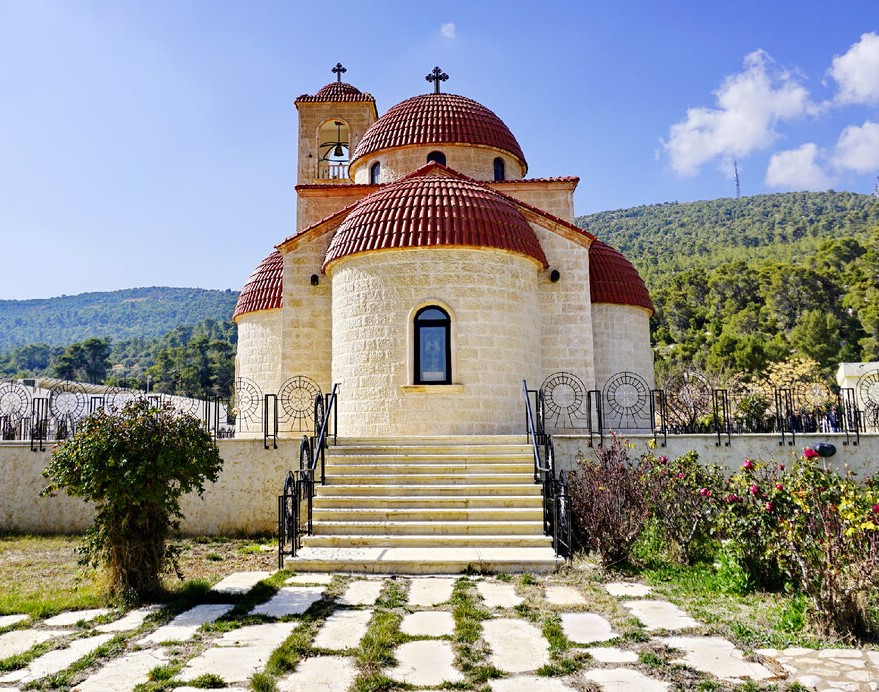

The forests of Dibbin host the Monastery of the Virgin Mary, Fountain of Life, for nuns, three kilometers from Dibbin Park in Jerash, where tourists and believers head towards it to receive spiritual blessings, because the goal of the visitor to the monastery is to see the details of the lives of the nuns who left the world and dedicated themselves to the Lord.
Al-Yanbou Monastery is the first Jordanian Orthodox monastery recognized on the map of religious tourism as a tourist attraction towards which those seeking spiritual exercise, prayer and tranquility turn.
The monastery was officially opened and monastic life began in May 2005 on a twenty-acre land owned by the Orthodox Patriarchate, during the reign of Patriarch Diodoros, who laid the foundation stone for the monastery church in April 1999. Bishop Christoforos Atallah, who is the spiritual head, built the monastery. He says that the founding of the monastery It came more than 600 years after the absence of monastic life in Jordan.
The monastery was opened by His Beatitude Patriarch Ireneos in 2005, and three nuns were tonsured and the beginning of monastic life in Jordan was announced. The monastery is witnessing a high demand for girls to take up monasticism, as six nuns currently reside in the monastery, including the head of the monastery.
The reason for calling the monastery the “Fountain of Life” goes back to the spring of life-giving and healing water that was in Constantinople. The monastery contains the Gethsemane Icon, that is, the image of the Virgin of Jerusalem found in Jerusalem, which was not drawn by hand, to be a blessing to the monastery and to all believers.
The visitor heads towards the main monastery church to pray, where modest dress is required, such as long skirts for women. The visitor to the church can see rare icons of the Virgin Mary, and the monastery library, which contains books of prayers, antiques, incense, and icons, as well as products that are made in the monastery by the nuns.
One of the rare sights that a visitor can see in the extended monastery grounds is the bead plant that is found in the Monastery of the Virgin Mary. Its name is Virgin’s Tears, and the nuns make rosaries and medals from it, which tourists can buy as souvenirs from the place.
The monastery includes a building for nuns, a conference hall, and a library, as well as workshops for manual work, preparation of wax and incense, church embroidery, and icon painting. There is also a well for collecting water.
The nuns spend their day with tasks distributed to them by the head of the monastery, who calls her “Mother,” while the nuns are called “Sisters.” They devote themselves to work, prayers, and spiritual reading, according to the law of each nun’s spiritual father.
The monastery includes a hall to receive believers who wish to participate in the daily divine service, practice spiritual exercises, and taste the weekly monastic life, where coordination and arrangements are made with the head of the monastery regarding any activity such as baptism or a funeral for the deceased, in addition to night prayers and supplications.
Major religious celebrations are held in the monastery, which is the Monastery Feast, which falls on the first Friday after Easter, where a festive mass is held in the church and a sermon is held, Easter eggs are distributed, and breakfast is held in the monastery with a table of love for all believers participating in the festive mass, as well as the Palm Sunday service every year. In addition to Good Friday and other religious celebrations.